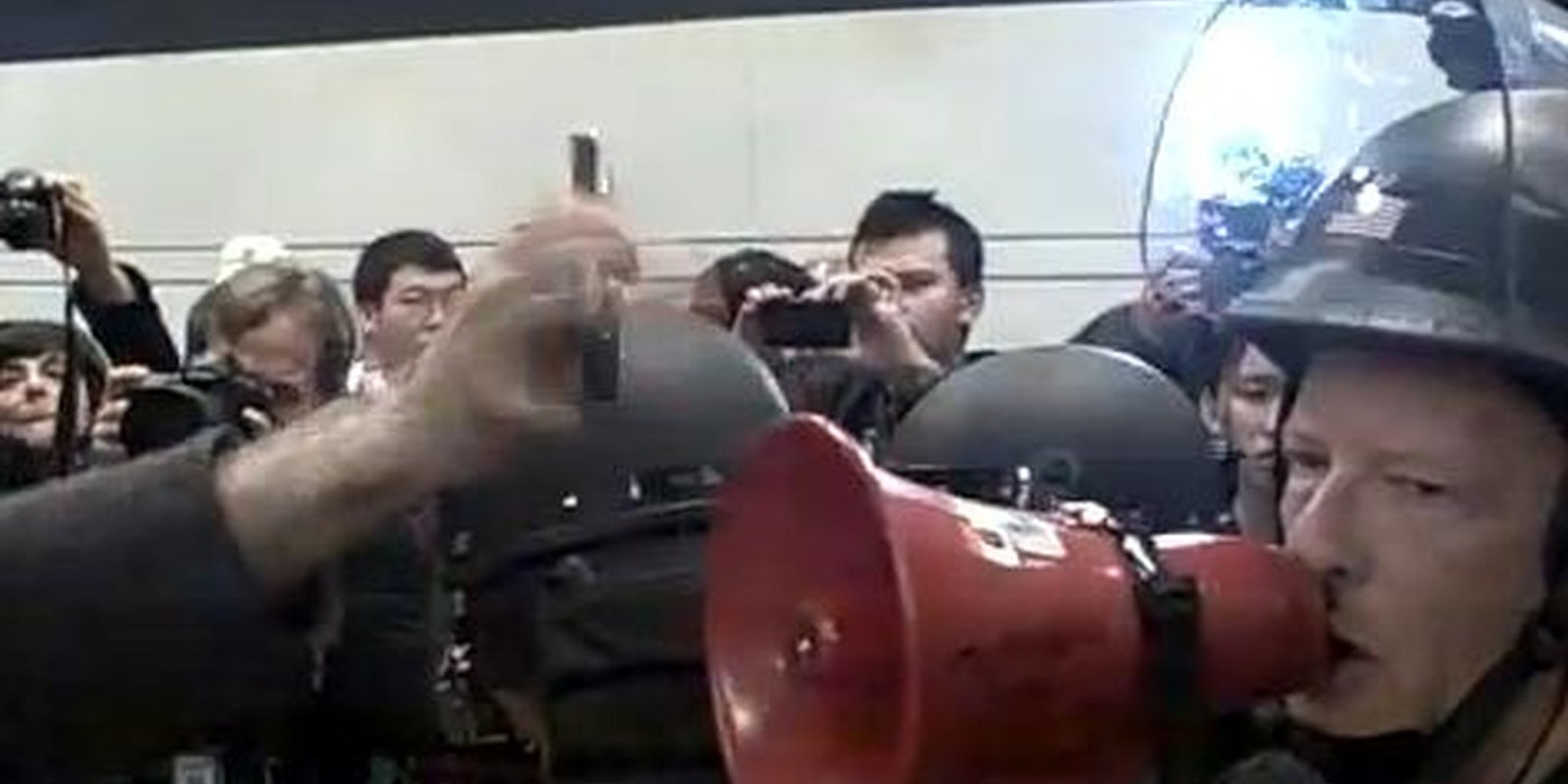What happens when you shut down cell-phone service to prevent a possible demonstration?
In the United States, at least in this case, it led to a protest, heaps of press (including a Daily Dot story) and an investigation by the FCC over the legality of such a countermeasure.
The Bay Area Rapid Transit agency, or BART, cut power to its underground cell-phone network on Thursday in order to quell a protest against last month’s shooting of Charles Hill by BART police. Many in the public — especially online — became instantly outraged, and the tactic caught the attention of the online entity Anonymous, which released a call to arms video on Sunday. (Commuters who were hampered by the protest were not universally against the tactic).
The video from Anonymous compares the disrupted cell-phone service to censorship of cell-phone use in the Middle East, and asks the public to “join us Monday, August 15 at 5 pm for a peaceful protest at Civic Center station.”
During Monday’s rush hour anywhere from a few dozen to 150 protesters (the number varied in press reports) showed up at the Civic Center station. They came for a variety of reasons. Some were protesting the cell-phone shutoff. Some were decrying the death of Charles Hill. Some were also protesting the shooting of Oscar Grant, who was shot on New Year’s Day in 2009. Many came for all three reasons.
BART did not shut down cell service in its stations during Monday’s protest. On Tuesday BART board member Lynette Sweet said on a popular NPR-affiliate talk show Forum that BART officials had made a mistake on Thursday.
“We created this Big Brother mentality,” she said, pointing out that the protest over the cell-phone ban was bigger than the original protest over the shooting.
For San Francisco, where protests and marches often number in the thousands, Monday’s event might have gone relatively unnoticed, save for the shutdown of the BART trains during the busy commute and the fact that many, including Anonymous, tweeted the protest live to the rest of the world.
On Twitter, #opBART and #muBARTek—a comparison of BART to deposed Egyptian autocrat Hosni Mubarak—never became trending topics on Twitter as Anonymous had hoped. The protest did manage to “paralyze” the transit system, as one Twitter user observed. Others wondered at the use of helicopters, though it was not clear if the helicopters belonged to news organizations or police.
Over on YouTube, footage of the protest included videos of folks waving their phones and shouting “Can you hear me now?” (a reference to Verizon’s cell-phone reception commercials), to people chanting “no police state.” Local news stations carried similar footage. (Judging by the footage, the reporter-to-protester ratio was quite high).
In protest-weary San Francisco, some expressed frustration at the closed stations and called Anonymous criminals for hacking a BART site on Sunday night and releasing customer data.
Others made fun of how few people showed up at the protest. As one YouTube commenter said, they’re all “hippies with no jobs.”
Responding to a naysayer on Anonymous’ YouTube video, KillerTuber32 wrote: “I just thought I’d point out, This was planned ONE DAY ahead of time and only got 8,911 views, The fact that 50-100 people showed up shows how much people actually DO care about this issue enough to be able to clear up their schedule and get there within a day. Just sayin.”
According to the Twitter account @opbart, Anonymous will be protesting again today at 5 pm, for a second round.


